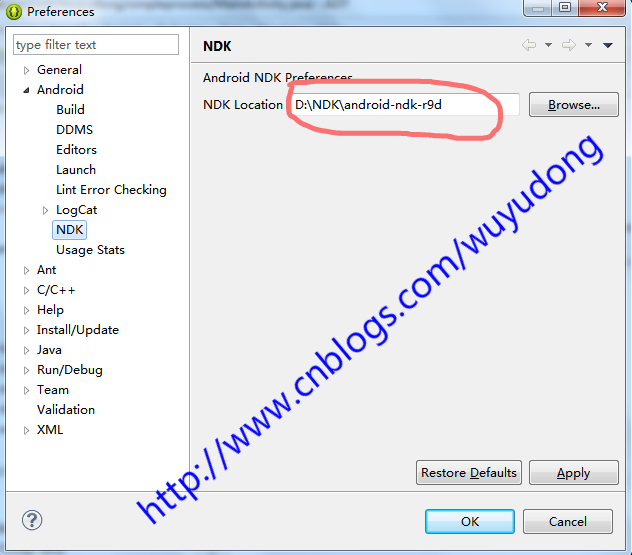編輯:關於android開發
在這個結構體中,str存儲實際字符串的首地址,length記錄字符串的實際長度,max_length記錄字符串緩沖區最多可以存放多少字符,alloc_increment表示當字符串需要分配內存時,每次分配多少內存。
- typedef struct st_dynamic_string
- {
- char *str;
- size_t length,max_length,alloc_increment;
- } DYNAMIC_STRING;
從上述函數可以看到,初始化時,初始分配的字符串緩沖區大小init_alloc會根據需要初始的字符串來做判斷。在分配好該DYNAMIC_STRING空間之後,我們會根據緩沖區的大小,字符串的實際長度,以及alloc_increment來初始化:length:字符串的實際長度max_length:緩沖區的最大長度alloc_increment:空間不夠時,下次分配內存的單元大小.
- my_bool init_dynamic_string(DYNAMIC_STRING *str, const char *init_str,size_t init_alloc, size_t alloc_increment)
- {
- size_t length;
- DBUG_ENTER("init_dynamic_string");
- if (!alloc_increment)
- alloc_increment=128;
- length=1;
- if (init_str && (length= strlen(init_str)+1) < init_alloc)
- init_alloc=((length+alloc_increment-1)/alloc_increment)*alloc_increment;
- if (!init_alloc)
- init_alloc=alloc_increment;
- if (!(str->str=(char*) my_malloc(init_alloc,MYF(MY_WME))))
- DBUG_RETURN(TRUE);
- str->length=length-1;
- if (init_str)
- memcpy(str->str,init_str,length);
- str->max_length=init_alloc;
- str->alloc_increment=alloc_increment;
- DBUG_RETURN(FALSE);
- }
從上述代碼可以看到,在字符串初始化化好之後,之後如果需要給該字符串增加新的內容,只需要根據之前存儲的信息來動態的realloc就好了。由於該結構體記錄了字符串相關的完整內容,所以動態的擴容會非常方便處理。
- my_bool dynstr_append_mem(DYNAMIC_STRING *str, const char *append,
- size_t length)
- {
- char *new_ptr;
- if (str->length+length >= str->max_length) //如果新增字符串後,總長度超過緩沖區大小
- {
- //需要分配多少個alloc_increment 大小的內存,才能存下新增後的字符串
- size_t new_length=(str->length+length+str->alloc_increment)/
- str->alloc_increment;
- new_length*=str->alloc_increment;
- if (!(new_ptr=(char*) my_realloc(str->str,new_length,MYF(MY_WME))))
- return TRUE;
- str->str=new_ptr;
- str->max_length=new_length;
- }
- //將新分配的內容,append到str之後
- memcpy(str->str + str->length,append,length);
- str->length+=length; //擴容之後str新的長度
- str->str[str->length]=0; /* Safety for C programs */ //字符串最後一個字符為’\0'
- return FALSE;
- }
返回字符串中第一次出現某個字符的地址。若沒有,則返回字符串結尾的地址(指向’\0')
- my_bool dynstr_trunc(DYNAMIC_STRING *str, size_t n)
- {
- str->length-=n;
- str->str[str->length]= '\0';
- return FALSE;
- }
字符串內容擴容:
- char *strcend(register const char *s, register pchar c)
- {
- for (;;)
- {
- if (*s == (char) c) return (char*) s;
- if (!*s++) return (char*) s-1;
- }
- }
對字符串用引號括起來,對其中的單引號進行轉義,主要用於執行一些系統命令(system(cmd))。比如:ls -al 會變成 \'ls -al\'比如:ls -a’l會變成\’ls -a\\\’l\'
- my_bool dynstr_realloc(DYNAMIC_STRING *str, size_t additional_size)
- {
- DBUG_ENTER("dynstr_realloc");
- if (!additional_size) DBUG_RETURN(FALSE);
- if (str->length + additional_size > str->max_length) //如果新的字符串內容超過緩沖區的最大長度
- {
- str->max_length=((str->length + additional_size+str->alloc_increment-1)/
- str->alloc_increment)*str->alloc_increment;
- if (!(str->str=(char*) my_realloc(str->str,str->max_length,MYF(MY_WME))))
- DBUG_RETURN(TRUE);
- }
- DBUG_RETURN(FALSE);
- }
通過定義動態字符串的結構體信息,每次分次進行字符串添加更多字符,都會根據字符串的當前的長度動態的擴容。而且每次擴容後,該結構體都記錄的當前字符串的實際信息(當前字符串的長度,緩沖器可容納字符串的長度,進行擴容的單元長度)。這樣,動態字符串的處理操作就變得非常方便了。
- /*
- Concatenates any number of strings, escapes any OS quote in the result then
- surround the whole affair in another set of quotes which is finally appended
- to specified DYNAMIC_STRING. This function is especially useful when
- building strings to be executed with the system() function.
- @param str Dynamic String which will have addtional strings appended.
- @param append String to be appended.
- @param ... Optional. Additional string(s) to be appended.
- @note The final argument in the list must be NullS even if no additional
- options are passed.
- @return True = Success.
- */
- my_bool dynstr_append_os_quoted(DYNAMIC_STRING *str, const char *append, ...)
- {
- const char *quote_str= "\'";
- const uint quote_len= 1;
- my_bool ret= TRUE;
- va_list dirty_text;
- ret&= dynstr_append_mem(str, quote_str, quote_len); /* Leading quote */
- va_start(dirty_text, append);
- while (append != NullS)
- {
- const char *cur_pos= append;
- const char *next_pos= cur_pos;
- /* Search for quote in each string and replace with escaped quote */
- while(*(next_pos= strcend(cur_pos, quote_str[0])) != '\0')
- {
- ret&= dynstr_append_mem(str, cur_pos, (uint) (next_pos - cur_pos));
- ret&= dynstr_append_mem(str ,"\\", 1);
- ret&= dynstr_append_mem(str, quote_str, quote_len);
- cur_pos= next_pos + 1;
- }
- ret&= dynstr_append_mem(str, cur_pos, (uint) (next_pos - cur_pos));
- append= va_arg(dirty_text, char *);
- }
- va_end(dirty_text);
- ret&= dynstr_append_mem(str, quote_str, quote_len); /* Trailing quote */
- return ret;
- }
 Android中Dialog對話框,androiddialog
Android中Dialog對話框,androiddialog
Android中Dialog對話框,androiddialog布局文件xml: 1 <LinearLayout xmlns:android=http://sc
 Android jni簡便開發流程,androidjni流程
Android jni簡便開發流程,androidjni流程
Android jni簡便開發流程,androidjni流程《Android jni helloworld》中介紹了開發jni helloworld的步驟,本文將介紹jn
 Android應用去掉標題欄的方法,android去掉標題欄
Android應用去掉標題欄的方法,android去掉標題欄
Android應用去掉標題欄的方法,android去掉標題欄1.在代碼裡實現 this.requestWindowFeature(Window.FEATURE_NO_TI
 Android:廣播接收器(BroadCastReceiver)要點隨筆。,
Android:廣播接收器(BroadCastReceiver)要點隨筆。,
Android:廣播接收器(BroadCastReceiver)要點隨筆。,@@@描述 廣播接收器可以收到&nbs